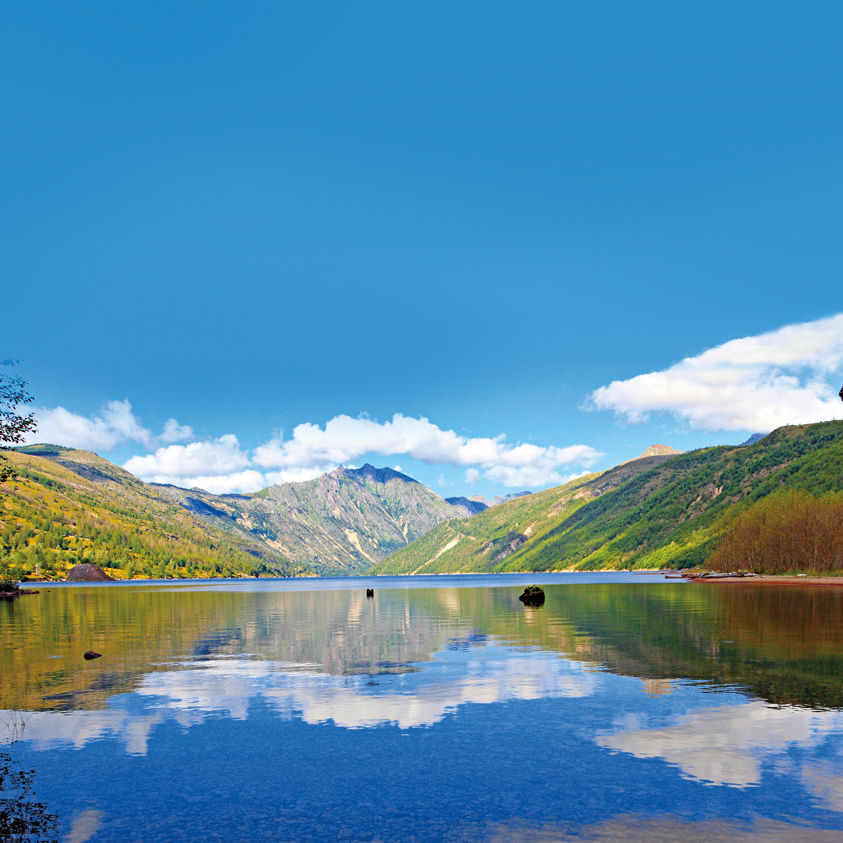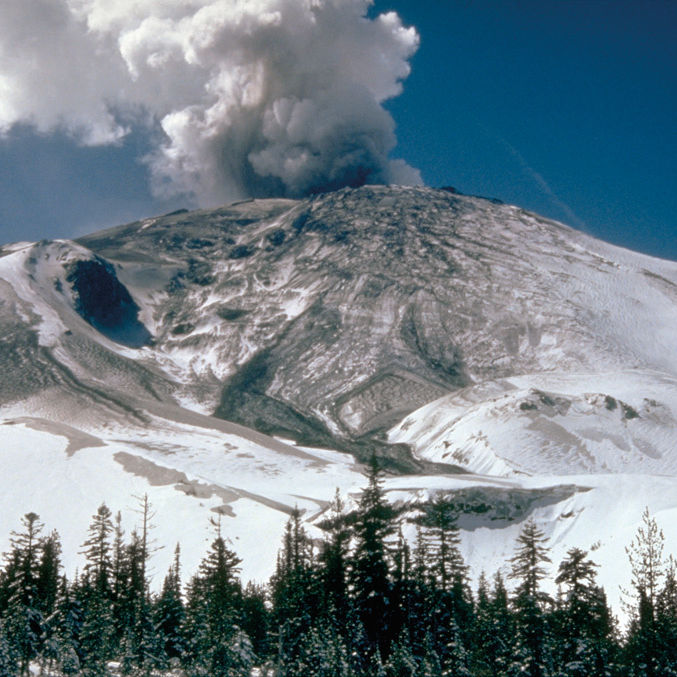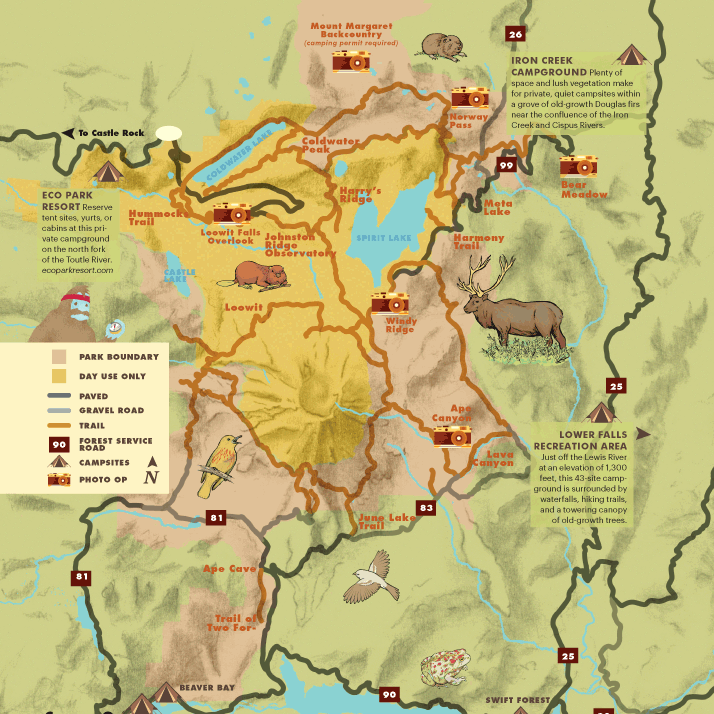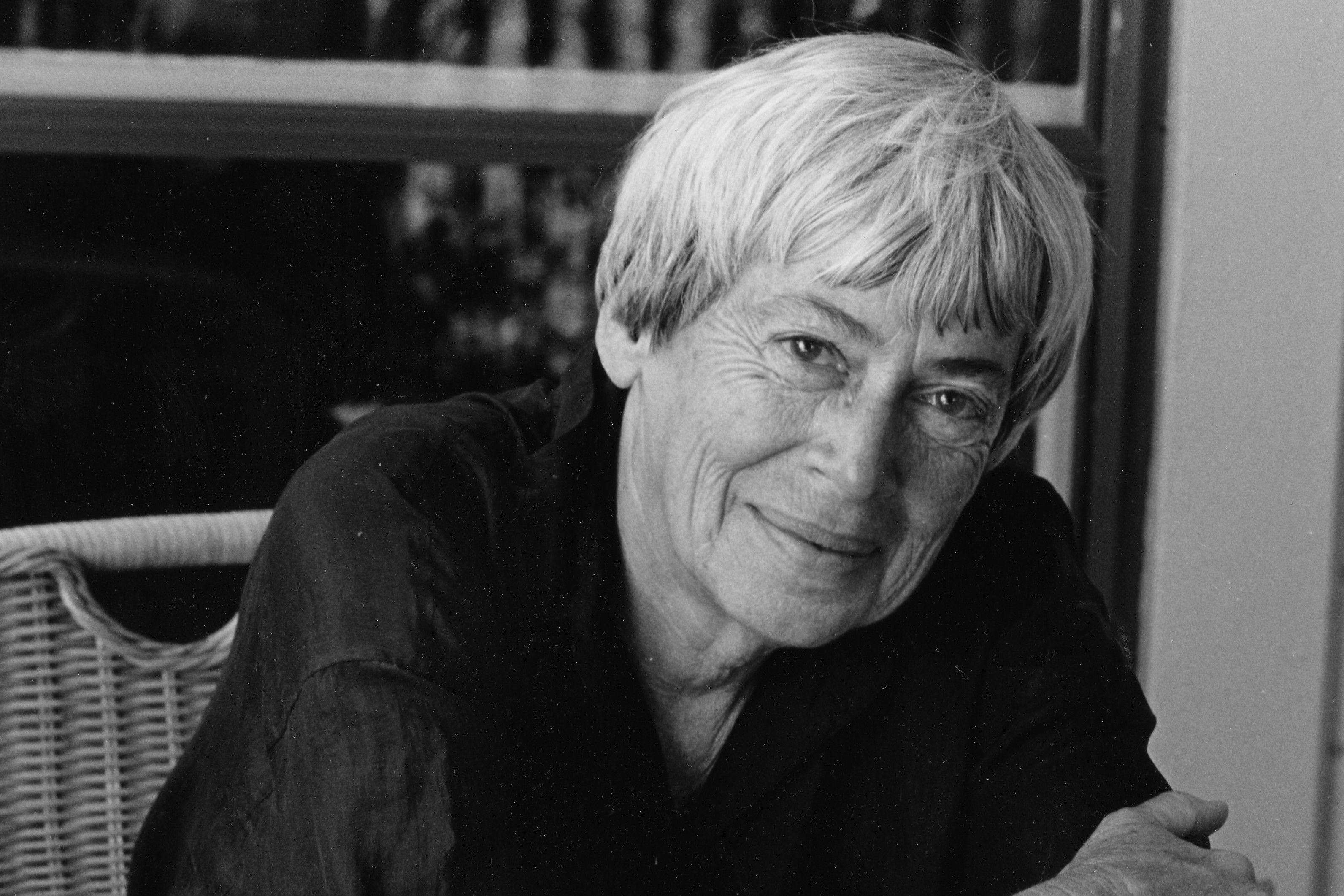Coming Back to the Lady
Editor’s note: This is an abridged version of an essay that appeared in the 2008 collection of poetry and prose In the Blast Zone: Catastrophe and Renewal on Mount St. Helens. Most contributors to the volume—ecologists, poets, journalists, sociologists, and more—camped together for four days in the summer of 2005 on a Mount St. Helens Foray. The resulting writing, wildly varied and deeply compelling, attempts to answer a timeless question: “What can this radically altered landscape tell us about nature and how we live our lives?”
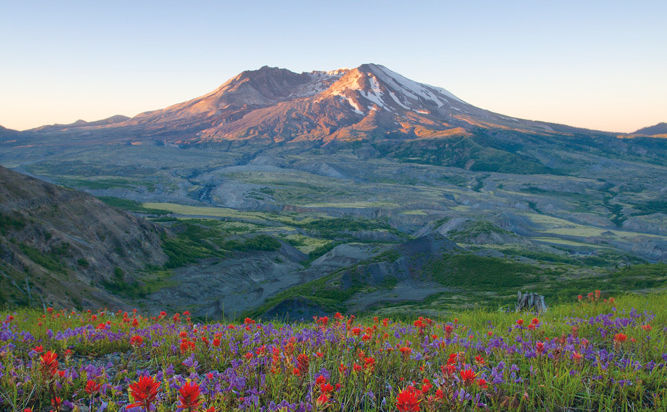
Mount St. Helens has been my neighbor for more than 45 years. If I look straight north out the window at the head of our bed, she is the first thing I see in the morning, dark in the dawn twilight, or floating pale above the mist at sunrise. My study windows look north, too, and when the “mountain is out,” as Portlanders say, I look up at her from my work again and again all day. Living in the shadow of the West Hills we don’t see the sun setting, but we see the light of sunset on the volcano, subtle glories never twice the same.
When “the Lady” started shaking and doing strange things in 1979, my love of her beautiful presence became a driving interest, almost a fixation. While she was dormant I had made sketches trying to catch the pure line of her almost-but-not-quite symmetrical flanks and the clouds that wreathed around her head like veils. As activity increased and ash eruptions began to blacken the cone, I drew what I saw as best I could, sitting at my study window, using binoculars to bring details close. Experimenting then with chalk pastels, I found them a good medium for the drama of ash and cloud and snow going on there, 60 miles away overland and 9,000 feet up in the air.
The great eruption of May 18, 1980, was inaudible as well as invisible in Portland: the sound wave, in its majestic vastness, simply stepped over us, to step down in Eugene. There were clouds between us and the mountain. We heard about the eruption on the morning news. Not till late in the morning did the cloud cover break to let us see the incredible column of dust and ash rising thousands of feet (though it seemed almost immobile) over a blur of haze where the mountain had been. I watched it all day long. It never occurred to me till evening to turn on the television. I missed many spectacular views of the eruption from news helicopters; but the real thing was there out my own window, the biggest thing I ever saw or ever hope to see.
In 1981, an artist, a photographer, and I were allowed into the Red Zone for one day. Twenty-five years later, on a journey we called the Foray with people who hadn’t seen the blast zone in those early years, I found there was no way to tell them what it had been like.
All slant, sloping dust: nothing standing but snags, burnt dead trees that had been stripped by the heat blast. Nearer the crater, whole hillsides of dead trees lying in strange patterns, toothpicks, blown down by the blast. And the total destruction area where there was nothing but ash hills, ash plains.
The destruction and desolation were almost impossible to take in, to comprehend. The mind offered similes: Hiroshima, Dresden...but this was not human-made. And not on a human scale at all. How to understand it?
Coming back a quarter of a century later, it was just as hard to comprehend that all that silent dead landscape was changed—was green—had come alive. Had always been alive. The paved highway we took to the Foray campsite and on to the other places we visited is the awful road I drove 25 years ago. Again and again I saw the places I saw that day. The difficulty was in believing: yes, this is it—this is the same place—that was the corner we turned from life to death.
Wherever a ridge or hummock gave shelter from the blast, there are now groves of young silver fir, quite well grown, mixed with alder, willow, and shrubs (as well as some monoculture Douglas fir plantations where various interests insisted on “restoring the forest”). Grass meadows and grass slopes, streamside shrubs, and flowers everywhere—more Indian paintbrush than I ever saw anywhere, yellow oxeye daisies, blue lupine, the flame-colored native columbine, buckwheat, and yes—pearly everlasting, fireweed, vetch, not one tiny plant of each, but thousands and hundreds of thousands, hillsides of them, thick and lively, nodding in the wind.... Growth, vitality, wonderful variety—far more variety and exuberance than there had been in the dark second-growth canopy forest that was there before the eruption.
Only the pumice plain at the foot of the cirque-shaped crater is still lunar, pale, with huge dry channels and dusty plains. Beyond it is a weird landscape of big lumpy bits of mountain that fell northwest of the crater in the lateral eruption.
From Windy Ridge you look up into the crater. In 1981 it was full of steam, mist, and cloud, and I have no clear memory of what I saw then. On the Foray, our first visit, too, was on a rainy, cloudy day. But when we went the next day we looked up through clear sunny air at the old dome, where the mountain first began to re-erect herself. She gave up that attempt some years ago, then began again in a different place. The new, growing dome is tucked up against the northwest wall, curiously like a young fetus in a womb; we could see only the very top of it, letting out peaceful wafts of steam. And we could see bits of the poor destroyed glacier, which they were just about to name when the new dome began heating up and melting it; I don’t know if it ever got a name. And there is a fine waterfall, Loowit Falls, from the upper lip of the crater. Hot, they told us. A hot waterfall.
Much of the cognitive dissonance I was experiencing was explained and relieved by the scientists with us. I listened to them with infinite pleasure. The main drift of what they said was this: we were absolutely wrong in every prediction we made after the eruption. They said this with jubilation. That is what is so lovable about real scientists: they rejoice in being proved wrong.
They said, our mistake was to see this as destruction to be followed by a long slow restoration, whereas it was a process of sudden change and quick renewal, not merely going back to what it was, and not diminishing but enlarging the variety and energy of the biota of the mountain. They said, we thought the blasted and ashed areas would be colonized gradually from the outside, from the edges, and instead they were regrowing themselves within two years, often with unexpected species. They agreed that the gradient of this growth has been particularly steep the last two or three years—the mountain slopes have been greening themselves more and more quickly and thoroughly, just as in the past year the volcano has been building her new dome ceaselessly and energetically.
Mount St. Helens is a much better gardener than any logging company or government agency. Wherever we have succeeded in keeping human interference and exploitation out of the monument, the renewal is on a broader scale than any “salvage” or plantings—more diverse, more vigorous, and more complete.
